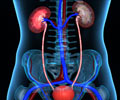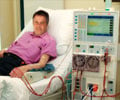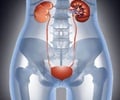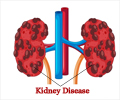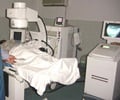A study appearing in the Clinical Journal of the American Society Nephrology says that abnormalities in the kidneys and their blood vessels occur in at least 25% of healthy individuals.
A study appearing in an upcoming issue of the Clinical Journal of the American Society Nephrology (CJASN) says that abnormalities in the kidneys and their blood vessels occur in at least 25% of healthy individuals.
While most of these conditions are not harmful enough to prevent someone from donating a kidney, future studies are needed to determine their impact on long-term health.When patients undergo computerized tomography (CT) imaging scans for medical reasons, physicians sometimes uncover unexpected abnormal findings in the kidneys or in the arteries that supply blood to the kidneys. To determine how commonly these abnormalities occur in healthy adults who have no clinical illness to justify a CT scan, Elizabeth Lorenz, MD, and Andrew Rule, MD (Mayo Clinic) examined nearly 2000 adults who came in to the Mayo Clinic to see if they could donate a kidney to a patient with kidney failure. These adults all underwent CT scans with detailed imaging of the kidneys and renal arteries.
The investigators found that abnormalities in the kidneys and renal arteries were quite common, occurring in at least 1 in 4 adults. Kidney stones were the most common abnormality and were present in 1 in 10 adults. Some abnormalities such as narrowing of the renal arteries, scars in the kidney, and masses in the kidney (several of which were early cancers) were found more often in patients over 50 years of age. Other abnormalities were more common in women than men.
The majority of these abnormalities were mild and were not causing the individuals any discomfort. More than 73% of these abnormalities were not harmful enough to prevent kidney donation, and only rarely did physicians prescribe medications to treat renal artery abnormalities or to prevent further kidney stone formation and growth.
"These findings highlight an interesting challenge implicit with improvements in imaging technology: physicians are now finding more subtle abnormalities in the kidneys and renal arteries, but lack clear evidence as to whether these findings are benign or harmful to the long-term health of patients," said Dr. Lorenz.
Study co-authors include Terri Vrtiska, MD, John Lieske, MD, John Dillon, MD, Mark Stegall, MD, Xujian Li, and Eric Bergstralh (Mayo Clinic).
Advertisement
The article, entitled "Prevalence of Renal Artery and Kidney Abnormalities By Computed Tomography among Healthy Adults," will appear online at http://cjasn.asnjournals.org/ on January 14, 2009, doi 10.2215/CJN.07641009.
Advertisement
Founded in 1966, the American Society of Nephrology (ASN) is the world''s largest professional society devoted to the study of kidney disease. Comprised of 11,000 physicians and scientists, ASN continues to promote expert patient care, to advance medical research, and to educate the renal community. ASN also informs policymakers about issues of importance to kidney doctors and their patients. ASN funds research, and through its world-renowned meetings and first-class publications, disseminates information and educational tools that empower physicians.
Source-Newswise
RAS


